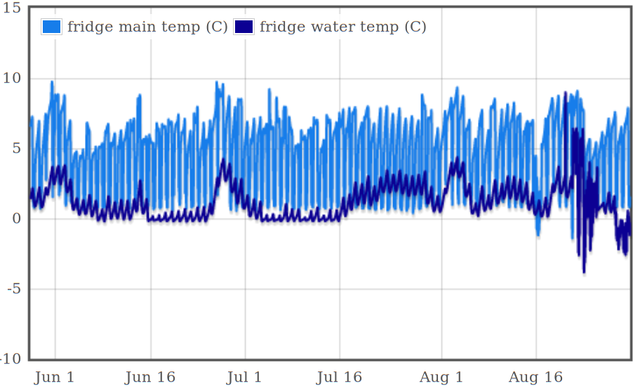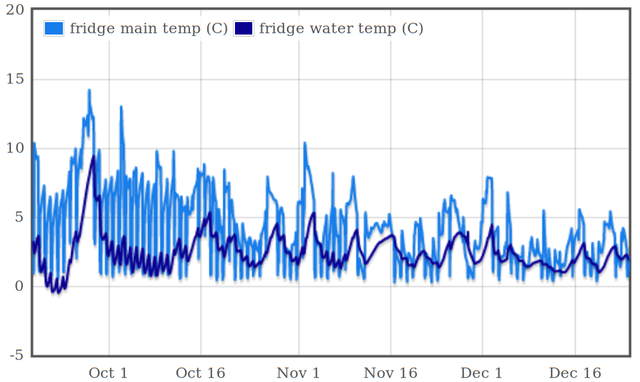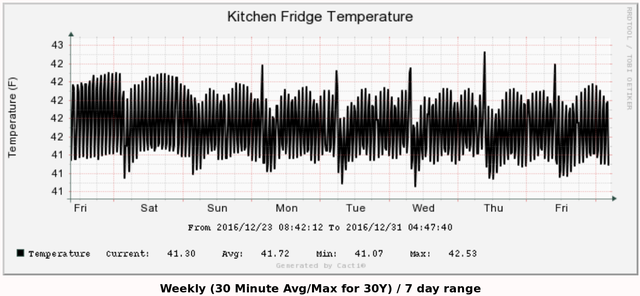The safe temperature range for a fridge is typically considered to be below 4C (40F). Of course, it also needs to stay above freezing to avoid damage to food.
There is often a considerable variation in temperature between different parts of a fridge, so while it claims to keep the temperature below 4C, it might run warmer on a top shelf or in shelves on the door. And fridge's have a temperature control, which also varies the temperature in some way.
In fact, the 4C value is not a magic safe range despite what the USDA will tell you; it's just a compromise point that slows down food spoilage to a reasonable extent. There is some sort of a curve involved.
Fridge0 aims for 0.5C to 5C, but it may sometimes heat up to 8C on a rainy week, and that's no real cause for alarm. Milk typically still lasts for a week in an 8C fridge.
If this seems scary, you can always add more solar panels if your fridge0 build doesn't run cool enough for you. Though note that your charge controller has a limit on the amount of power it can handle from solar panels.
Joey Hess's fridge0
Here is temperature data from the first 8 months of operation. (Leaving out a period of data collection failures.)
The water temp in those graphs is the temperature of the thermal mass; different parts of the fridge range in temperature between that and the main temp.
Marc Merlin's conventional fridge
This data from Marc Merlin's conventional fridge suggests that temperatures a little above 4C are not unusual; it seems to run between 4 and 5.8C.
others
Please add your fridge's temperature data here if you have any. Including from conventional fridges.



